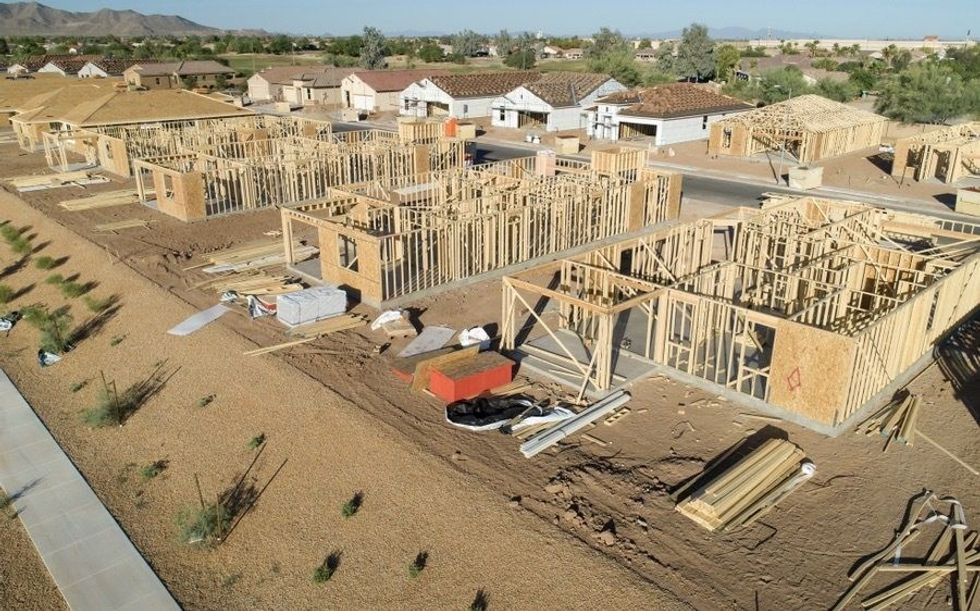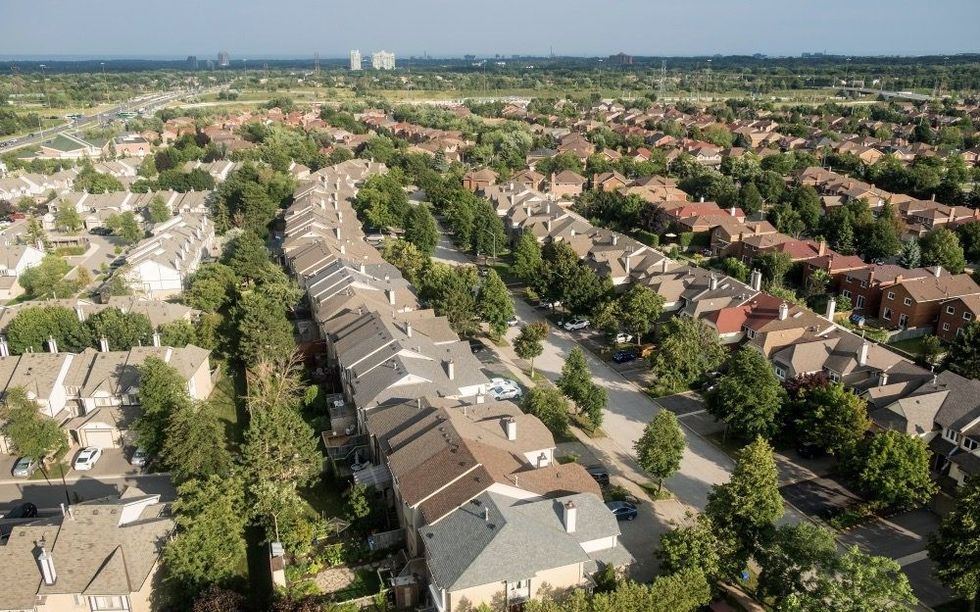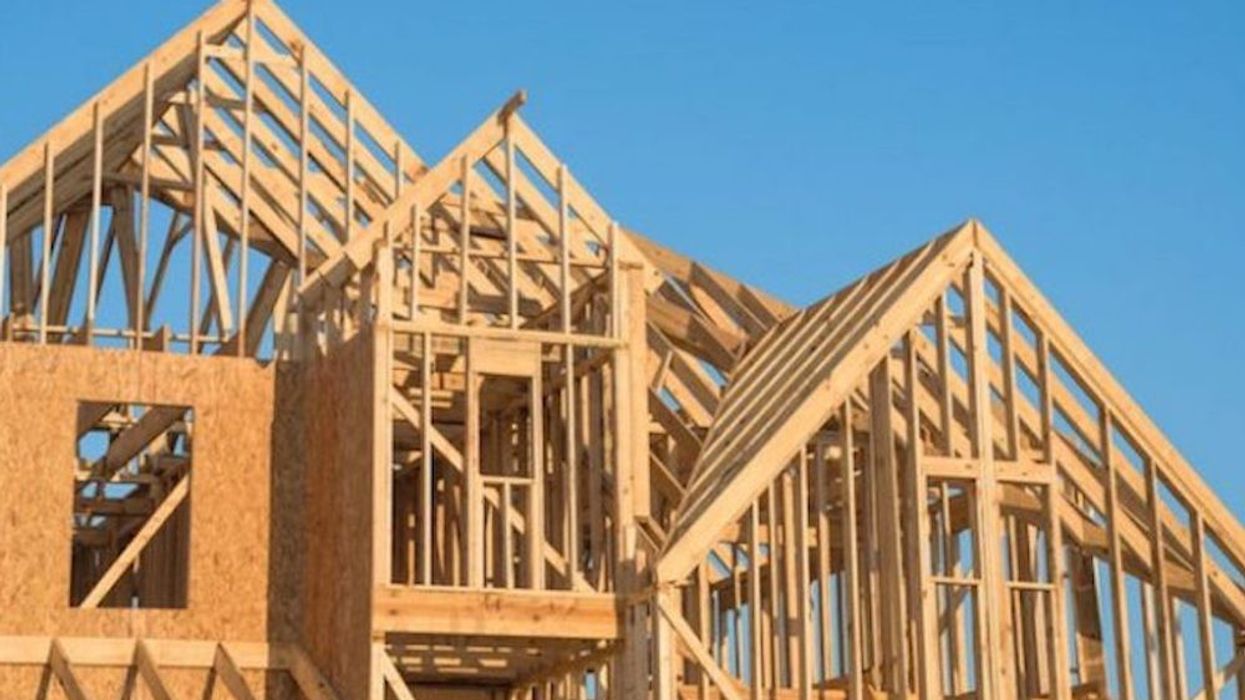In National Bank of Canada’s Weekly Economic Watch, the bank highlighted Canada’s housing starts, home prices, and borrowing capacity.
There is, at least, some good news on the supply front. Instead of sagging to 255,000 as economists anticipated, the bank says housing starts rose 21,500 to reach 287,300 (seasonally adjusted and annualized), their highest level since last November. Urban starts rose 20,300 to 264,200 on a 22,700 gain in the multi-family segment (to 201,200). Starts in the single-family segment, meanwhile, dipped 2,500 to 63,000, says the National Bank of Canada.
When it comes to housing starts on a provincial level, retreats in British Columbia (-11,800 to 40,200) and Saskatchewan (-1,900 to 4,900) were more than offset by advances in Ontario (+11,100 to 93,700), Alberta (+6,100 to 46,500), Quebec (+4,600 to 71,100), Nova Scotia (+9,100 to 12,300), and New Brunswick (+5,700 to 8,900). According to National Bank of Canada, ground-breaking in the rapidly growing Nova Scotia and New Brunswick actually reached new all-time highs.

According to National Bank of Canada, we can expect housing market demand to moderate as interest rates rise, which will subsequently lead to a tapering of residential construction -- something that soared in popularity during the thick of the pandemic.
The bank also highlighted the softening of home sales and prices that came with the spring.
After falling 5.2% in March and 11.2% in April, seasonally adjusted home sales dropped another 8.6% in May to 42,600, bringing the total drawback over the three months to 25.0%.
The drop in home prices was quite widespread, leaving virtually no corner of the country untouched, after a pandemic-inspired red-hot run. In fact, 75% of the markets covered saw price retreats. Meanwhile, new listings increased 4.5% countrywide, lifting the number of months of inventory from 2.3 to 2.7, its highest level since July 2020. Based on the active-listings-to-sales ratio, despite looser conditions, sellers markets continued to prevail in all provinces save British Columbia, Alberta, and Saskatchewan, where the market was balanced, according to the report.
National Bank of Canada attributes Canada’s recent slip in home sales to the increase in long-term fixed mortgage rates, which have gone from under 3% to well over 4% in just a few weeks (for a five-year term). “As a result, the stress test that uses the higher of 5.25% or the contractual rate plus two percent must now use the second option, which means that it will grow more and more restrictive with each new rate hike,” reads the report. “As for the variable rate, it is still at a level that allows buyers to qualify at the 5.25% rate. However, this could change quickly in the coming months if the Bank of Canada normalizes monetary policy as planned.”
This could result in a slowing of the resale market further given that most new mortgages are variable rate. As we stand, the National Bank of Canada has strongly suggested that we can expect more interest rate hikes -- especially if inflation keep rising as predicted. Canada's inflation rate is expected to hit a staggering 7.4% on Wednesday.

According to the report, the Teranet–National Bank Composite National House Price IndexTM increased by 1.6% in May compared to the previous month and after adjusting for seasonal effects. Ten of the 11 markets in the composite index were up during the month, including Halifax (2.8%), Montreal (2.6%), Ottawa-Gatineau (1.9%), Quebec City (1.9%), Winnipeg (1.8%), Toronto (1.7%) and Vancouver (1.3%). From May 2021 to May 2022, the composite index increased 18.3%, with growth being driven by Halifax (34.0%), Hamilton (27.9%), Victoria (23.0%) and Toronto (21.8%). Growth was lower than average in Ottawa-Gatineau (16.9%), Montreal (16.6%), Vancouver (16.4%), Winnipeg (12.6%), Quebec City (9.1%), Calgary (7.1%), and Edmonton (1.6%).
Despite the monthly increase, however, annual growth in the composite index fell from its peak of 18.8% in April to 18.3% in May. “This deceleration comes as the housing market is experiencing a sharp slowdown due to rising interest rates and deteriorating affordability in recent months. Indeed, there is now a significant gap between the increase in property prices and the borrowing capacity of buyers,” reads the report.
Since the beginning of the pandemic, the composite index has grown by 38.7%, while borrowing capacity has declined by 5.8%, representing a 44.5% gap. With the continued normalization of monetary policy, Bank of Canada estimates that property prices could decline by 5% to 10% by the end of 2023 to be more in line with the financial reality of households.





















